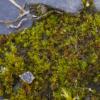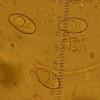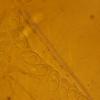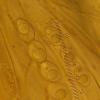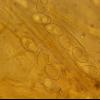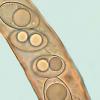
11-01-2014 23:32
 Zuzana Sochorová (Egertová)
Zuzana Sochorová (Egertová)
Good evening,I have got here a smooth-spored Octos

05-01-2014 22:19
Hello,I found this yellow species on dung of sheep

12-01-2014 22:20
 Rubén Martínez-Gil
Rubén Martínez-Gil
Hola a todos.Ayer encontramos estos ejemplares de

31-12-2013 10:15
 Alan Rockefeller
Alan Rockefeller
Seen at the Yuba Watershed Fungus Fair. Growin

11-01-2014 23:26
 Joop van der Lee
Joop van der Lee
Found on horse dung.Fruitbody covered with rigid h

11-01-2014 19:14
 Rubén Martínez-Gil
Rubén Martínez-Gil
Hola a todos.Pongo unas fotos de lo que creo que e
Octospora
Zuzana Sochorová (Egertová),
11-01-2014 23:32
 Good evening,
Good evening,I have got here a smooth-spored Octospora.
Dried material in water:
8 spores in the asci, in one row, smooth, 18-20,5 x 10-11 micrometer, usually with 2 or 1 guttule(s).
Paraphyses 2-3 micrometer broad, up to 6,5 micrometer at the apex.
On soil. Few Bryum argenteum was present + something I don´t know. 13. X. 2013, Moravia.
Is it Octospora gyalectoides? I´m not sure because of the guttules.
Zuzana
Eike Heinemann,
12-01-2014 12:05
Re : Octospora
Hello Zuzana
in my opinion is that ( O.gyalocosides (O.Crosslandii). (like you said?)
I found this species at five times .
Eike
in my opinion is that ( O.gyalocosides (O.Crosslandii). (like you said?)
I found this species at five times .
Eike
Zuzana Sochorová (Egertová),
12-01-2014 15:17

Re : Octospora
Thank you, Eike!
Peter Püwert,
12-01-2014 21:46
Zuzana Sochorová (Egertová),
13-01-2014 19:54

Re : Octospora
Hi Peter,
thank you for nice pictures. I collect Octospora since autumn and have got (probably) 3 collections including this one.
Zuzana
thank you for nice pictures. I collect Octospora since autumn and have got (probably) 3 collections including this one.
Zuzana



